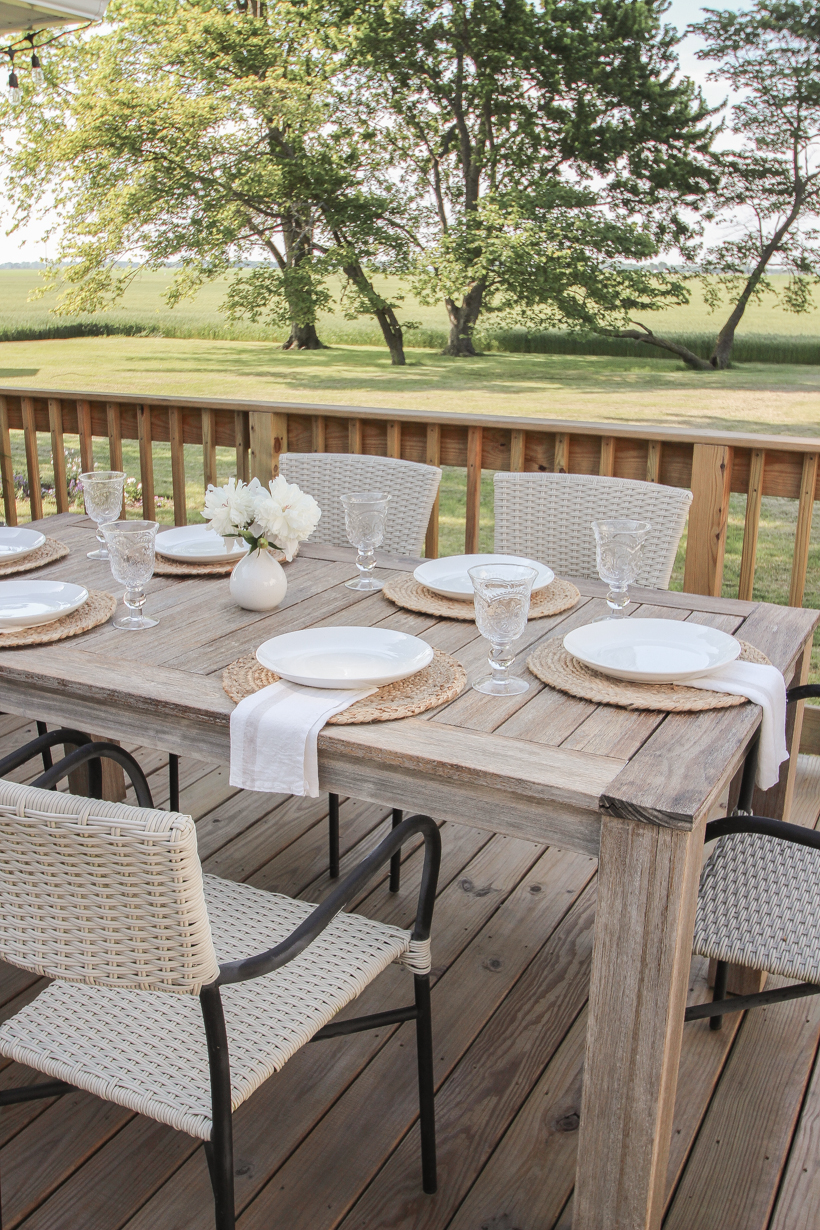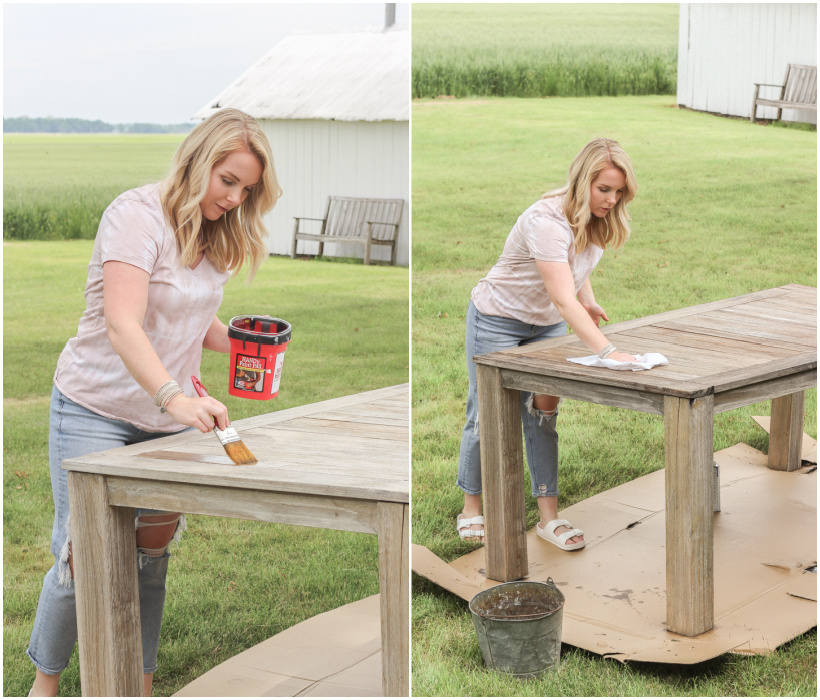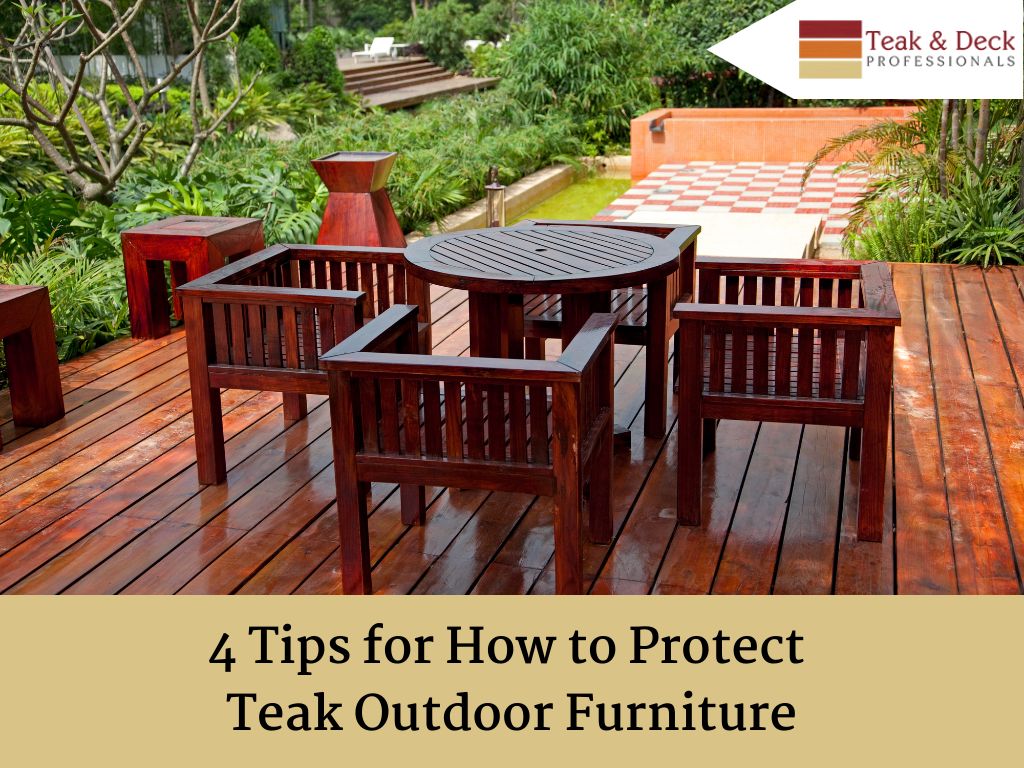Have you found yourself wondering what the best protection for your wooden garden furniture might be? If so, you're not alone. Many garden enthusiasts love the natural look and feel of wooden furniture but are also concerned about maintaining its pristine condition. Wooden garden furniture is a striking addition to any outdoor space, but it requires care and protection to keep it looking its best.
In this informative guide, you'll explore various methods and products that can help protect your wooden garden furniture from the elements, ensuring longevity and beauty. From understanding the challenges posed by weather conditions to exploring different protective treatments, you'll get the knowledge needed to make informed decisions.
Understanding the Challenges
Wooden furniture is not just an aesthetic choice; it’s a functional part of your garden that deserves attention and care. Understanding the challenges posed by the environment will help you appreciate the importance of proper protection.
Weather Conditions
Weather conditions significantly affect wooden furniture. Here are some common weather-related issues:
- Sunlight: Prolonged exposure to UV rays can cause wood to fade, dry out, and become brittle.
- Rain: Moisture from rain can lead to swelling, warping, and eventually rot.
- Frost: Freezing temperatures can cause wood to crack and split.
- Humidity: High humidity levels can lead to mold and mildew, damaging the wood over time.
Wood Types
Different types of wood behave differently under environmental conditions. Here are a few common types used in garden furniture:
| Wood Type | Characteristics |
|---|---|
| Teak | Naturally resistant to water, pests, and decay |
| Cedar | Naturally resistant to rot and pests, lightweight |
| Redwood | Resilient to moisture and decay, beautiful grain |
| Oak | Strong and durable, requires regular maintenance |
| Pine | Softwood, needs treatment to prevent rotting |
Knowing the type of wood your furniture is made of can help you choose the best protection method.
Protective Measures
Protecting your wooden garden furniture involves several steps, from regular maintenance to applying protective treatments. Here's what you need to do:
Cleaning
Regular cleaning is the first step to protect your furniture. Dirt and grime can trap moisture and lead to decay. Follow these steps for effective cleaning:
- Dust: Remove loose debris using a soft brush or cloth.
- Wash: Use a mild soap and water solution to scrub the surfaces gently.
- Rinse: Thoroughly rinse with clean water to remove soap residue.
- Dry: Allow the furniture to air dry completely before applying any treatments.
Sanding
Sanding helps to smooth out rough patches and prepare the wood for protective treatments. Use fine-grit sandpaper and gently sand along the grain of the wood. This will open up the wood fibers, making it easier for sealers and oils to penetrate and provide better protection.
Sealing
Sealing your wooden furniture is crucial to protect it from moisture and UV damage. There are different types of sealants available:
- Water-based sealers: These are eco-friendly and provide good protection against moisture.
- Oil-based sealers: These penetrate deeper into the wood, providing longer-lasting protection.
Oiling
Applying oil is another excellent way to protect wooden garden furniture. Oils penetrate the wood and provide a barrier against moisture. Common oils include:
- Teak Oil: Perfect for teak furniture, offering UV protection and water resistance.
- Linseed Oil: A traditional choice, good for various types of wood, though it may darken the wood.
- Tung Oil: Provides a durable, water-resistant finish, suitable for oak and other hardwoods.
Using Varnish
Varnish adds a tough, protective layer on top of the wood, protecting it from scratches, water, and UV rays. Polyurethane varnish is particularly popular due to its durability.
Covering
Consider using furniture covers to shield your wooden furniture from harsh weather. Look for covers made from breathable materials to prevent mold and mildew.

This image is property of www.andersonlumbercompany.com.
Regular Maintenance
Even with the best protective treatments, regular maintenance is essential to ensure longevity.
Seasonal Checks
Inspect your furniture at the beginning and end of each season. Look for signs of wear, such as cracks, fading, or mold, and address these issues promptly to prevent further damage.
Reapplication of Treatments
Protective treatments, like oils and sealers, need to be reapplied periodically. For most products, once a year is adequate, but always follow the manufacturer’s instructions.
Storage
If possible, store your furniture indoors during harsh weather conditions, such as winter. This will significantly extend the life of your wooden garden furniture.
Eco-Friendly Options
Protecting your furniture doesn’t mean you have to harm the environment. There are eco-friendly products available:
- Natural Oils: Oils like hemp or jojoba oil are biodegradable and safe for the environment.
- Eco-friendly Sealers: Look for water-based sealers with low VOC (Volatile Organic Compounds) levels.

This image is property of lovegrowswild.com.
Tips for Specific Types of Wood
Different woods require different care. Here are some tips for some of the most common types of wooden garden furniture:
Teak
Teak is known for its durability and natural resistance to the elements. However, it can benefit from regular oiling to maintain its rich color, as it tends to turn gray over time when left untreated.
Cedar
Cedar is resistant to pests and decay but can benefit from occasional sealing to protect against moisture. Its light weight makes it easier to move indoors during bad weather.
Redwood
Redwood is naturally resilient, but applying a sealer can prevent it from becoming too dry and cracking over time. Regular cleaning to remove moss and mildew is also recommended.
Oak
Oak is robust but needs regular treatments to protect against moisture and pests. Oil-based sealers work well with oak, providing deep penetration and long-lasting protection.
Pine
Pine is a softwood and more susceptible to damage. Paint or varnish can provide an extra layer of protection against the elements, making it durable enough for outdoor use.
Do-It-Yourself (DIY) Treatments
For those who enjoy DIY projects, creating your own protective treatments can be rewarding. Here’s a simple recipe for a homemade wood oil:
Homemade Wood Oil Mixture
Ingredients:
- 1 part beeswax
- 2 parts olive oil
- 1 part essential oil (optional for fragrance, such as lavender or lemon)
Instructions:
- Melt the beeswax in a double boiler.
- Stir in the olive oil until fully combined.
- Add a few drops of essential oil if desired.
- Allow the mixture to cool and solidify.
- Apply to the wood using a soft cloth, working it into the grain. Buff to a shine.
This homemade solution provides a natural and eco-friendly way to protect your wooden garden furniture.

This image is property of lovegrowswild.com.
Common Mistakes to Avoid
Sometimes, despite our best intentions, we make mistakes in caring for our wooden garden furniture. Here are some common pitfalls to avoid:
Using Harsh Chemicals
Avoid using harsh chemicals that can strip the natural oils from the wood, leaving it dry and vulnerable.
Ignoring Cracks and Splits
Small cracks and splits can evolve into larger problems if ignored. Regularly inspect your furniture and address any small damages immediately.
Neglecting Undersides
It's easy to forget the undersides of tables and chairs, but these areas are equally vulnerable to damage. Always treat and clean all surfaces of your furniture.
Over-Oiling
Using too much oil can leave a sticky residue on your furniture. Apply oil sparingly and wipe off any excess to prevent buildup.
Conclusion
Finding the best protection for your wooden garden furniture involves understanding the challenges posed by the environment, choosing the right types of protective measures, and committing to regular maintenance. By following the steps outlined in this guide, you can enjoy the beauty and functionality of your wooden garden furniture for years to come.
Remember, the key is consistency in care and using the right products. Whether you opt for store-bought treatments or homemade solutions, taking the time to protect and maintain your furniture will pay off in the long run. So, enjoy your garden, make informed decisions, and take pride in your well-cared-for wooden furniture!

This image is property of teakanddeck.com.
















